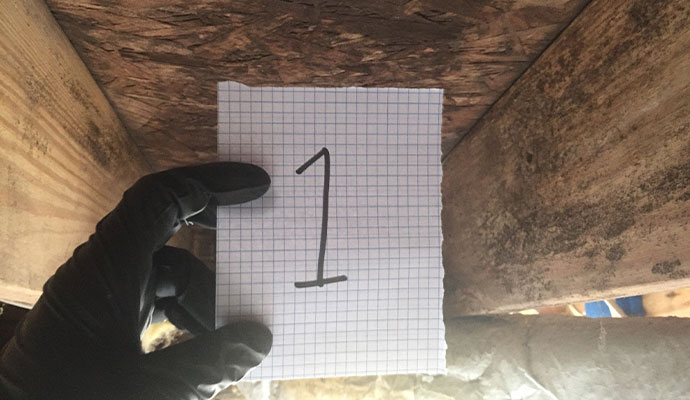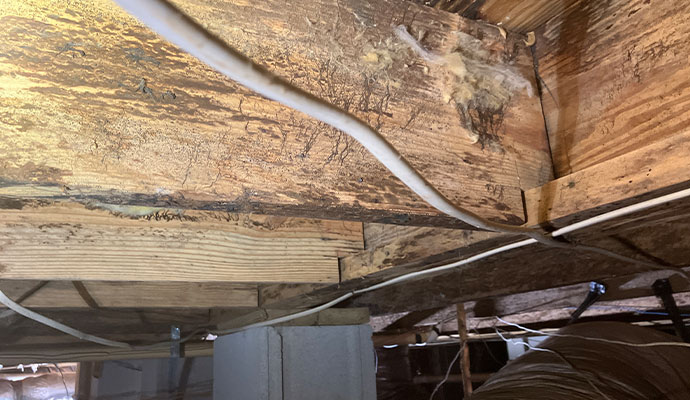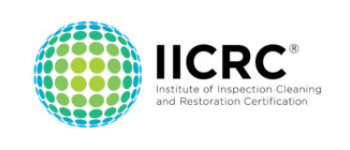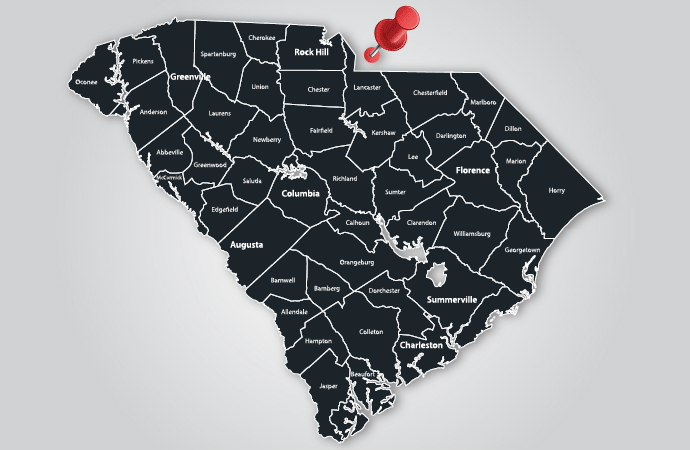Crawlspace Mold Remediation in Columbia & Lexington, SC

Crawlspaces are common areas of mold growth in your South Carolina home because that’s where water will rise up from or fall down to. In other words, along with basements, crawlspaces are usually very damp environments and often have cold walls, especially during the winter. When you combine warm, heated indoor air with a cold wall, you can get condensation and mold growth.
Many families don’t spend a lot of time in their basements and rarely look in their crawlspaces. This means mold problems in these areas aren’t often revealed until the problem has grown to a significant magnitude. Yikes!
But you may think that since you can’t see it and it’s under the house, you can ignore it. Nothing could be farther from the truth. Crawl spaces directly impact the quality of air in your home. Consequently, mold in crawl spaces can be hazardous to your family’s health. Even if you never enter your crawl space, the air below will pass into your home through various chinks, cracks, crevices, gaps, and holes and circulate throughout it, spreading toxic particles.
Mold becomes dangerous when it attaches itself to organic materials in a damp crawl space, the perfect environment for growth. Too much moisture allows mold to grow and produce mold spores. When these enter your home, it causes serious allergic reactions. Prolonged exposure can worsen asthma problems and in some cases, trigger autoimmune disease.
Once mold has gained a foothold in your home, it can be extremely destructive and challenging to get rid of. So the alternative—ignoring it and hoping that the problem will just go away on its own—can lead to structural damage, expensive remediation and repairs, and even serious health issues.
But have no fear! The information on this page will help you identify any mold problems you may have in your crawlspace, give you advice for mold removal near you, and will also help you prevent any problems from occurring there in the future.

Signs of Crawl Space Mold Problems
The crawl space is located between the foundation walls of a house and is typically filled with soil. Most homes have a layer of plastic covering the soil to help decrease moisture levels. Yet, after heavy rains or a burst pipe, the crawl space can be subjected to high levels of moisture which can rapidly lead to mold problems.
Ways to Find Out if There’s Mold in Your Crawlspace
Homeowners who believe their crawl space could be susceptible to mold should take the following actions:
Look for Leaks
To check for leaks that may be creating a damp crawl space, you’re going to have to look like a gopher and get down there. Use a flashlight and inspect the complete interior for any sources of water. Pay specific attention to HVAC ducts and plumbing.
Look for any standing water as well and try to identify its source. It could be leaking from your plumbing, water pipes that supply your home, or even groundwater.
Examine the Ventilation
Many times, the crawl space is the least well-ventilated area of your home. There should be 1 square foot of ventilation for every 150 square feet of crawl space area. But there’s some dispute over whether that’s a good thing or a bad thing. Some contractors and construction experts assert that ventilation is necessary. Others refute that belief and say that ventilation, rather than allowing humid air to escape, actually encourages moist air to enter the space.
It’s perhaps best to consult a professional from Kingsley Water Damage & Fire Cleanup to check out your crawl space and decide. Many extenuating factors could affect the ventilation question, including the size of the area, any obstacles in the space, the regional climate, and so on.
Inspect the Insulation
There’s an enormous volume of energy loss from a non-insulated crawl space. It also provides plenty of opportunities for moisture to seep into a home. If you don’t have insulation, now’s the time to have it put in.
If your crawl space is insulated, inspect it once or twice a year to ensure the insulation is still in position and isn’t drooping. That can suggest you have a water problem. If so, replace it or have installed crawl space encapsulation – a heavy-duty moisture barrier, sealed vents, insulated walls, and a crawl space dehumidifier.
Check Gutter Positioning
All gutters and downspouts need to be aimed away from a home. This will prevent numerous problems related to water damage. If water is flowing toward the home’s foundation, there’s a definite cause for concern. Make sure your gutters are draining at least 6 feet away from the house. Downspout extensions can help.
While you’re at it, keep gutters in good repair and clear of leaves and debris. Leaky and clogged gutters will eventually cause problems to the roof, the walls, and the foundation of a home, increasing the chance of mold growing in your crawlspace.
Dryer Vents Should Vent to the Outside
Vented air from the dryer is full of moisture since it contains water from the clothing being dried. Do not vent it into your crawlspace or you’ll definitely have moisture problems.
Count on Us to Remediate Crawl Space Mold in Columbia and Lexington, SC
If you find crawl space mold, do yourself a favor and call in Columbia mold removal experts at Kingsley Water Damage & Fire Cleanup. Schedule a crawl space repair inspection and find out whether you have a mold issue or not. We’re happy to apply long-lasting repairs to remove mold from your Columbia crawl space.





